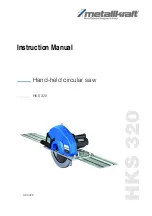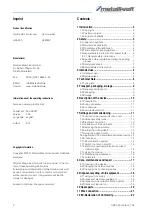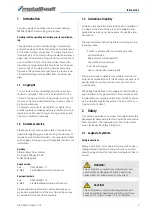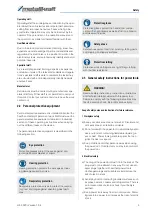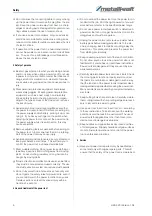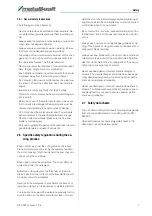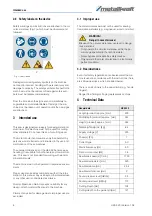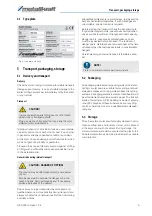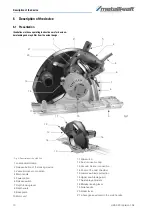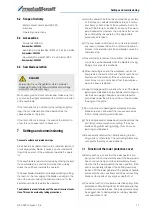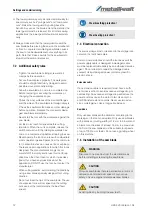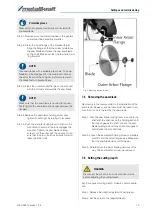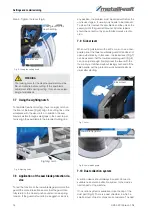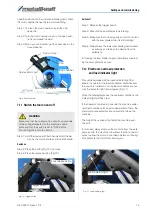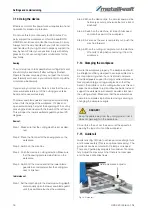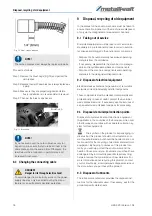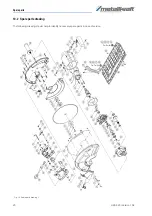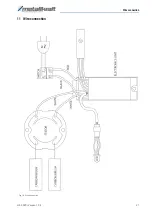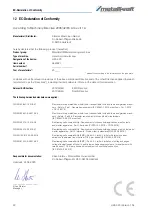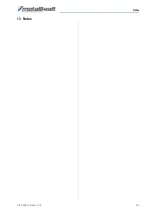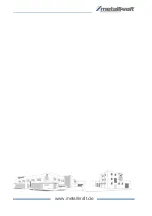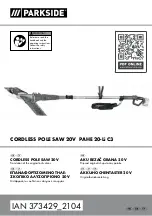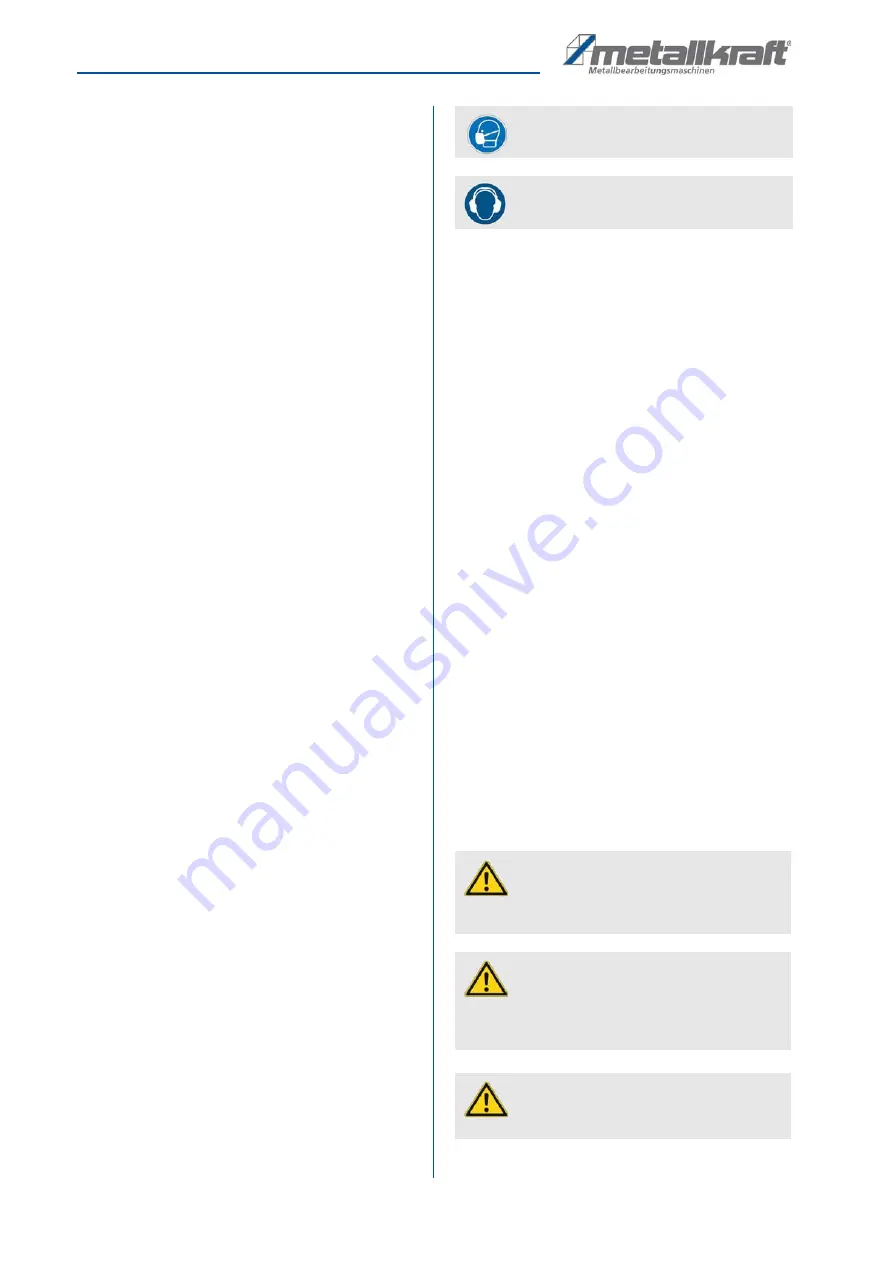
12
HKS 320 | Version 1.04
Settings and commissioning
c) The lower guard may only be retracted manually for
special cuts such as "plunge cuts" and "compound
cuts". Raise the lower guard by pulling back the
handle. As soon as the blade enters the material, the
lower guard must be released. For all other sawing
applications the lower guard should work automati-
cally.
d) Always make sure that the lower guard covers the
saw blade before placing the saw on the workbench
or floor. An unprotected rotating saw blade causes
the saw to run backwards and cut everything in its
path. Note that it takes a while for the saw blade to
stop after the switch is released.
7.2 Additional safety rules
- Tighten the saw blade holding screw and all
clamps before operation.
- Secure the workpiece properly. The workpiece
should be straight and firmly clamped to avoid
possible movement and jamming.
- Allow the saw blade to come to a complete stop
before removing or securing the workpiece or
changing the workpiece angle.
- Check the inner surfaces of the mandrel flanges
and the sides of the saw blade for foreign objects.
- Check the saw blade for cracks or other damage
before operation. Replace the cracked or dama-
ged saw blade immediately.
- Never start the tool with the workpiece against the
saw blade.
- Let the motor reach full speed before cutting.
- Important: When the cut is complete, release the
switch and wait until the rotating saw blade has
come to a complete stop before stopping the saw.
- Never operate the tool in an area with combustible
solids, liquids or gases. Sparks from the commuta-
tor / carbon brushes can cause a fire or explosion.
- There are certain applications for which this tool is
designed. The manufacturer strongly recom-
mends NOT to modify and/or use this tool for ap-
plications other than those for which it was desi-
gned. If you have any questions about the
application, DO NOT use the tool, but contact the
manufacturer.
- When cutting plastics, avoid melting the plastic by
using a saw blade specially designed for cutting
plastics.
- Do not overheat the tips of the saw blade. The use
of excessive force will not speed up the cutting
process. Let the tool determine the best feed
speed.
7.3 Electrical connection
The mains voltage must correspond to the voltage indi-
cated on the tool's nameplate.
Under no circumstances should the tool be used if the
power supply cable is damaged. A damaged cable
must be replaced immediately by an authorised service
agent. Do not attempt to repair the damaged cable
yourself. Using damaged power cords may result in
electric shock.
Extension cable
If an extension cable is required, it must have a suffi-
cient cross-section to avoid excessive voltage drop or
overheating. An excessive voltage drop will reduce the
power and may cause the motor to fail. Use only U.L.
and CSA listed extension cords. Never use two exten-
sion cords together. Use a long cable instead.
Saw blade
Only use saw blades with a diameter according to the
markings on the tool's nameplate: Only use saw blades
with a blade set (cutting width) of 1.8 mm to 3.6 mm and
a blade core thickness of at least 1.5 mm to a maximum
of 3.0 mm.the saw blades must be suitable for speeds
of up to 1700 rpm or faster. Do not use a grinding wheel
on this machine.
7.4 Installation of the saw blade
Wear breathing protection!
Wear hearing protection!
WARNING
Disconnect the machine from the electrical mains
before installing or removing the saw blade.
CAUTION
Only use saw blades that are permissible in terms of
dimensions and maximum speed. For your own
safety, only use original metal power saw blades.
CAUTION
Avoid injuries by touching the saw teeth.

